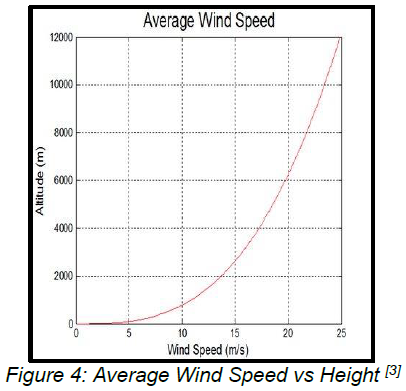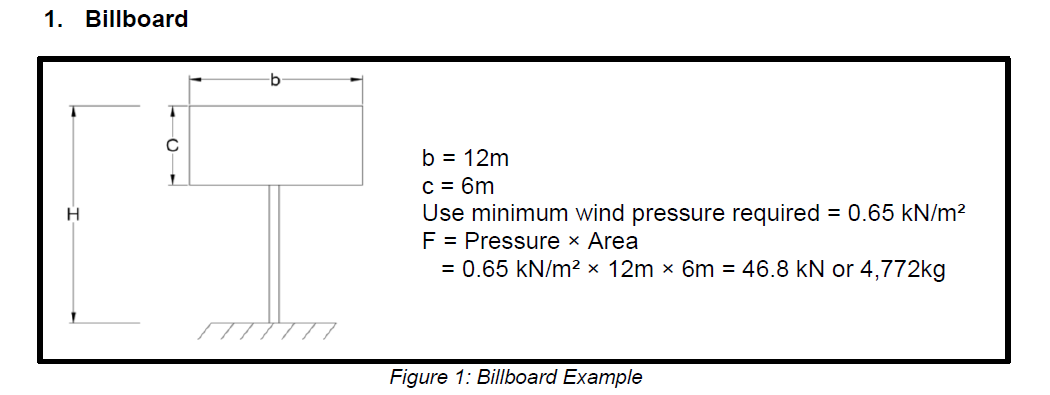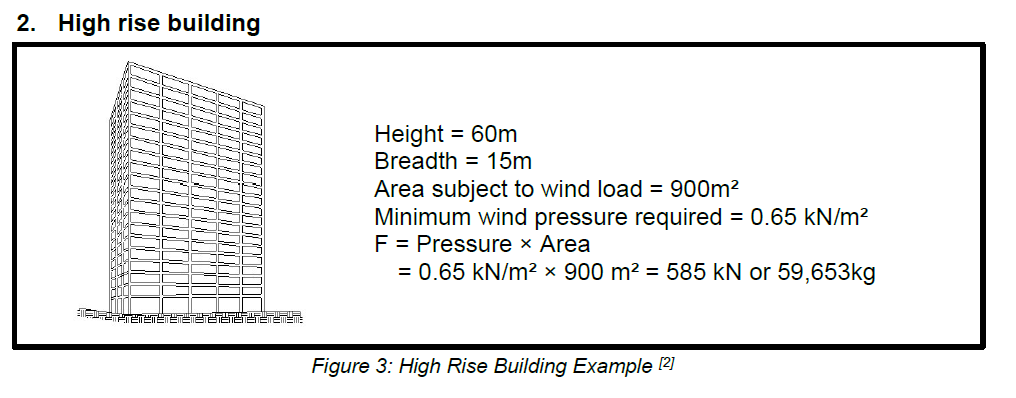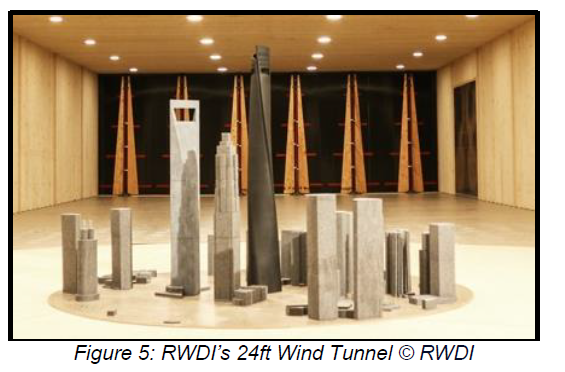Author: Ir. Dr. Justin LAI Woon Fatt | 23 November, 2023
INTRODUCTION
Wind loads refer to the pressures exerted by the wind onto a structure. In general, wind loads need to be considered for safety and human comfort. Tall and slender structures are particularly sensitive to wind load. If these forces are not properly accounted for, they can lead to structural failures, endangering human lives. The 2013 disaster in Penang involving the Menara Umno serves as a reminder: a large lightning arrester plummeted from the top of a 21-floor structure due to strong storm and wind, tragically buried a man passing by. On the other hand, Excessive vibrations or swaying caused by wind loads can be discomforting to occupants, especially in tall buildings. Proper consideration of wind loads ensures that the building’s response to wind is within acceptable limits for human comfort.
VARIATION OF WIND LOAD
Wind load varies based on the height of a structure. At ground level, wind velocity is minimal, but as you move higher, the wind speed grows exponentially. As a result, the taller the structure, the more critical it becomes to account for wind load during design and analysis. For structures under 50 metres in height, a commonly used approach is the quasi-steady assumption. This method assumes the building is firm and unyielding, with the wind applying a consistent side force.
In Malaysia, there is a specific guideline (MS1553:2002) for buildings up to 200 metres and bridges of a similar length. This guideline helps professionals calculate the wind’s impact. It considers local factors such as location, wind velocities, construction materials, and design specifications. However, it’s important to note that this guideline is not suitable for marine structures, larger bridges, or transmission towers [1].
Nevertheless, the minimum wind force that the main system must resist in the design should be equal to at least 0.65 kN/m² multiplied by the area of building or structure as seen in a vertical plane perpendicular to the direction of the wind.
WHAT HAPPENS WHEN WIND LOAD IS NEGLECTED?
Two sample examples are provided below to visualise the danger of the structural design practice without considering the wind load.
This simplified calculation showed that – even with minimum wind pressure applied, the wind load of 4,772kg is almost equivalent to around 4.5 units of saloon car (assumed 1000kg).
The calculation above is over-simplified and not the complete truth, but it gives a clear idea how even a moderate wind pressure can exert significant loads, especially on tall buildings. The overall wind load of 59,653 kg is near to the weight of 60 units of saloon car (assumed 1000kg). Setting up a billboard or building a high rise structure without taking in sufficient wind load consideration may cause the structure to be underdesigned, and this may lead to structures overturn especially after strong winds and heavy storms.
FACTORS AFFECTING WIND LOAD
The amount of wind load exerted on structures include but not limit to;
1. Wind Speed and Velocity
This is the primary driver of wind loads. The faster the wind, the higher the force exerted. On top of different wind speed zoning, wind speeds increase exponentially with height. Therefore, taller structures usually experience higher wind loads.
2. Structure’s Shape and Orientation
Aerodynamic Shape: Structures with smooth, rounded shapes tend to deflect the wind around them, resulting in less wind pressure compared to those with sharp edges or flat surfaces. Frontal Area: The side of the structure directly facing the wind (windward side) experiences positive pressure, while the opposite side (leeward) experiences negative pressure.
3. Terrain and Surroundings
The presence of obstructions like trees, hills, or other buildings can disrupt wind flow. A building in a dense city might experience less wind loads compared to an open field.
WIND TUNNEL TEST FOR TALL BUILDINGS
For unique or iconic structures, and often for high-rises, designers resort to wind tunnel tests. This is because in such cases, standard analytical methods often lack the necessary precision. In these tests, scale models of the building are subjected to wind flows in a controlled environment to measure the wind-induced pressures and movements. The results are then used to refine the design to ensure safety and comfort [4].
CONCLUSION
Wind load considerations are crucial in structural design, especially for tall or unique structures. While Malaysia generally experiences light winds according to the Malaysian Meteorological Department [5], it is necessary to remain vigilant and to adhere to MS1553:2002 while considering wind load in structural design.
Ir. Dr. Justin LAI Woon Fatt
CEO/ Founder
IPM Group
References:
[1] Malaysian Standard 1553:2002. Code of Practice on Wind Loading for Building Structure, Department of Standards Malaysia
[2] ESDEP (European Steel Design Education Programme). (n.d.). Lecture 14.15: Tall building design. ESDEP LECTURE NOTE [WG14]. Retrieved on 23rd November 2023 from https://fgg-web.fgg.uni-lj.si/~/pmoze/esdep/master/wg14/l1500.htm
[3] Chandrasekaran, Karthik. (2019). An Alternative Design Approach for a Lighter than Air Airborne Wind Turbine Generator System. 1-6. 10.1109/ICSCM46742.2019.9081819.
[4] Irwin, P., Denoon, R. & Scott, D. (2013). Wind Tunnel Testing of High-Rise Buildings: An Output of the CTBUH Wind Engineering Working Group. Council on Tall Buildings and Urban Habitat: Chicago.
[5] Ministry of Natural Resources, Environment & Climate Change. Official Website of Malaysian Meteorological Department. Retrieved on 23rd November 2023 from https://www.met.gov.my/en/pendidikan/iklim-malaysia/#Wind%20Flow





